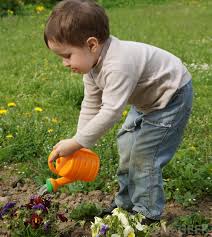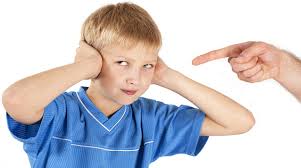A parent’s goal should be to teach our children how real life works. In real life, we experience the consequences of our behavior. For example, when we don’t pay our phone bill, the company cuts off our service. Your kids need to learn these consequences as well. There are two main main types of consequences.
One kind is natural consequences. This is where you do not intervene and let the child experience real life. One example of of this is not bringing homework to school when your child forgets. Yet another is not doing laundry if your child doesn’t put their dirty clothes in the hamper. Another is to let a child fall down on the soft carpet after you tell him to be careful.
The other kind is logical consequences. This is where the parent helps create consequences so the child learns a helpful life lesson for going forward. This consequence is to be used when natural consequences don’t work. For example, a child doesn’t experience any natural consequences if he doesn’t do the dishes, but a parent can create consequences for him.
Natural and logical consequences allow children to be held responsible for their own problems. It is best that children learn that actions have consequences when they are younger. If they are protected or saved from the consequences of their actions until they are older, the ramifications of their choices will be much painful.
According to the book Redirecting Children’s Behavior by Kathryn Kvols, there are 4 rules (4 Rs) for logical consequences. They must:
Be related
Be respectful
Be reasonable
Teach Responsibility
For example, if your child runs into the street, a logical consequence would be for him to go in the house for 2 minutes. Leaving the yard is related to the incident. Two minutes is short and therefore reasonable for a 2 year old. It teaches him to take responsibility. If it is done calmly, then it is respectful to the child.
Another example would be if a child steps on some flowers and kills or damages them. Instead of yelling at the child, you would have him plant a new flower or water the existing flowers. This is related, respectful, reasonable and teaches the child responsibility.
A third example is if a child knocks down another child’s block tower. The first child should help rebuild the tower.
Logical and natural consequences should not be accompanied by the shaming phrase “I told you so” for four reasons. First, the child already had the consequence and doesn’t need additional emotional dumping. There is nothing worse than having to come back into the house for 2 minutes and miss out on the fun AND having your parent say something like “well, that’s what you get for running in the street”. Second, by saying this you teach your child to emotionally dump on others. Third, in the real world, it is less likely that anyone yells at you for a poor choice, they just impose a consequence such as not hiring you or turning off your electricity. Fourth, adding the blame or shame damages your relationship with your child. Your child will focus their anger towards you and less on learning the lesson at hand.
Consequences are different from discipline. For some, discipline means a parent is creating an arbitrary consequence for the child or inflicting some kind of emotional or physical pain (spanking) so the child pays for their past mistake. A better way for the child to learn is by experiencing the consequences of their behavior. A child must learn that in life there are consequences to behavior. It is far easier for a child to learn this when they are young and when the consequences are smaller.
REFERENCE
Kvols, K. (1997). Redirecting children’s behavior (3rd ed.). Seattle, WA: Parenting Press.



